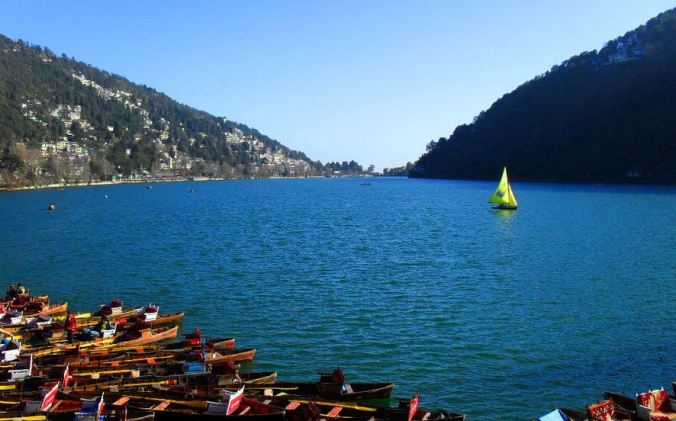The history of the railways with innumerable twists and turns, stories of influence and opinions, debates over the advantages and disadvantages is a tale of how a nation as big as India comes together.
The Beginning –
The saga of Indian Railways began in the 1900s as an attempt to bind the nation into one connected piece of land. In 1853, the Bombay-Thane railway was the very first railway on the Indian soil.
Since then, there was no looking back. By the 1930s, India was well-connected with rail stations and routes. After the independence, the Indian Railways has undergone some structural changes. Also, we have gotten smaller zones and subdivisions for better service and management. That’s why with a mind blowing 68 divisions, Indian Railways is one of the widest networks in the world.
Indian Railway Zones & Sub Zones/Divisions-
Indian Railways has 17 zones and each zone has many divisions. The divisions have their own headquarters, operational workshops and management. It is one well-oiled organization and looking at the vastness of the entire operations, you can’t help feeling overwhelmed.
1. Central (CR) –
This zone was created after independence in 1951. The head quarter is located in Mumbai. The zone consists of Mumbai, Pune, Bhusawal, Nagpur and Solapur.
2. Eastern(ER) –
Right after the Central Zone, the government took up the job of re-designing the country’s eastern and northern railways divisions for better management. The Eastern Zone was created, as a result, in 1952. Head quartered at Kolkata, the zone includes Howrah, Asansol, Malda and Sealdah stations.
3. Northern (NR) –
This zone was also created in 1952. Having Delhi as its head quarter, the zone includes Ambala, Firozpur, Moradabad, Lucknow and Udhampur.
4. North Eastern (NER) –
Created in 1952, the zone includes Izzatnagar and Benaras. The head quarter is at Gorakhpur.
5. South Eastern (SER) –
This zone was created in 1955 in order to handle the densely populated areas of the eastern part of the country. Head quartered at Kolkata, the zone covers Ranchi, Chakradharpur, Kharagpur and Adra.
6. Northeast Frontier(NFR) –
Created in 1958, this zone plays a crucial role in maintaining communication throughout the north east region. The head quarter is at Guwahati and the zone covers major junctions in the area like Tinsukia, Lumding, Silchar, Alipurduar, Kathiar and Rangia.
7. Eat Central (ECR) –
Created recently in 2002, this zone has lessened the loads of Northern and Eastern Zones to a great extent. Head quartered at Hajipur, the zone covers Danapur, Mughalsarai, Samastipur, Dhanbad and Sonpur.
8. East Coast (ECoR) –
In 2003, this zone was created to connect and improve management of railways in the coastal areas of the east. The head quarter is at Bhubaneswar, the capital of Odisha and the zone covers Visaskapattanam, Sambalpur and Khurda Road.
9. North Central (NCR) –
The population explosion in the northern parts of the country has led to the division of the great state of Uttar Pradesh into smaller states. And as a continuation to that administrative endeavour this zone covering Jhansi, Allahabad and Agra was created in 2003. The head quarter is at Allahabad.
10. North Western (NWR) –
In 2002, this zone was created with the head quarter in Jaipur. The zone covers the major cities in Rajasthan like Ajmer, Bikaner and Jodhpur. Creation of this zone has helped tourism to flourish in Rajasthan with proper focus of hospitality and service quality.
11. West Central (WCR) –
Created in 2003, the zone covers Bhopal and Kota along with the head quarter at Jabalpur.
12. Southern (SR) –
This zone was created in 1951 as an original railway zone after the independence. Head quartered at Chennai, the zone today covers Tiruchirappalli, Salem, Madurai, Thiruvananthapuram and Palakkad.
13. South Central (SCR) –
Created in 1966, head quartered in Secunderabad, the zone covers Nanded, Guntur, Parbhani, Hyderabad, Guntakal and Vijayawada.
14. South East Central (SECR) –
Created in 2003, the zone covers Raipur and Nagpur along with the head quarter at Bilaspur.
15. South Western (SWR) –
Created in 2003, head quartered at Hubli, the zone covers Bangalore and Mysore.
16. Western (WR) –
Created in 1951, head quartered at Mumbai, this zone covers Mumbai Central, Ahmedabad, Rajkot, Ratlam, Vadodara, Bhavnagar and Gandhidham.
With these many zones, the Indian Railways is truly an amazing network that keeps our country alive and thriving.


